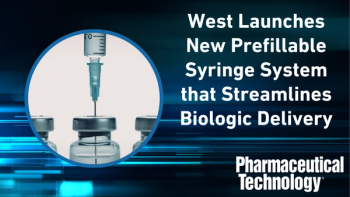
- Pharmaceutical Technology-04-02-2013
- Volume 37
- Issue 4
Moisture Permeation of Pharmaceutical Packaging
USP is proposing a new performance testing standard for moisture permeation of pharmaceutical packaging.
A key factor in maintaining the quality of a pharmaceutical product throughout its shelf life is the integrity of its packaging. Preventing moisture from permeating through the packaging is an important function of the container-closure system used for medicines. Today, moisture uptake is a common cause of product package failures in the pharmaceutical industry—and a topic that the US Pharmacopeial Convention (USP) is addressing with an upcoming revision to United States Pharmacopeia–National Formulary (USP–NF) General Chapter <671> Containers—Performance Testing for Plastic Containers.
Updating General Chapter <671>
Initially developed in the 1970s primarily for use by pharmacists dispensing medications into the familiar amber vial, General Chapter <671> has become heavily relied upon over the years by pharmaceutical manufacturers, packagers, repackagers, and FDA because it is referenced in the agency’s Guidance for Industry: Container Closure Systems for Packaging Human Drugs and Biologics. However, the general chapter has had only minor edits and additions in intervening years. Because it is being used beyond its original scope and utilizes an older permeation test, modifications to the general chapter have become necessary. This effort is supported by industry, and the newly proposed standard builds on method development work completed over the past decade by the Product Quality Research Institute (PQRI). PQRI is a nonprofit consortium of organizations that conducts research to generate specific scientific information on issues of interest to FDA and to standards-setting organizations such as USP.
One of the key ways the general chapter is being updated is through the proposal for a new moisture vapor transmission rate test method for solid oral-dosage forms. The current test method is a gravimetric method that is not very robust, which can lead to variation in test results. The proposed new method is also gravimetric, but is more reproducible and uses more rigorous environmental test conditions. Both the older and newly proposed methods measure weight gain over time. However, the information yielded by the new method will give end-users a more accurate assessment of how much protection their packaging is affording to the final product.
ASTM standard
The proposed general chapter, including the new method for calculating moisture vapor transition rate, aligns with the recently released ASTM International standard: “ASTM D7709–12 Standard Test Methods for Measuring Water Vapor Transmission Rate (WVTR) of Pharmaceutical Bottles and Blisters.” ASTM sets international voluntary consensus standards. The revised USP general chapter is included in Pharmacopeial Forum 39(2) March–April 2013, and USP invites comment on the proposal at www.usp.org/usp-nf/pharmacopeial-forum.
Classification
An underlying issue relevant to this activity is the USP classification system for packaging. At present, USP specifies the categories of “well-closed” and “tight” in its classification, with the latter used much more frequently. Certain medications, however, require packaging beyond “tight”—requiring no moisture permeation. While no change to the classification system was included in the new proposal, USP would like to open a dialogue with regulators, manufacturers, contract packagers and repackagers, and other stakeholders about whether, and how, this classification system could be expanded. The classification system—along with applications of the new <671> method, manufacturer case studies, current regulatory thinking from FDA, and other areas affected by the new method (e.g., desiccant choice, which is particularly important with the method change)—will be among the important areas of discussion at a May 20–21, 2013 workshop cosponsored by USP and PQRI in Rockville, MD.
Articles in this issue
almost 13 years ago
Strategic Partnering for Manufacturingalmost 13 years ago
Advancing Flow Chemistry in API Manufacturingalmost 13 years ago
Report from Latin Americaalmost 13 years ago
Fine-Chemical Producers Make Targeted Investmentsalmost 13 years ago
Evaluating Equipment Utility and Innovationalmost 13 years ago
Previewing Packaging Innovationsalmost 13 years ago
Method Validation by Design to Support Formulation Developmentalmost 13 years ago
Bio/Pharmaceutical Facility Design and Operation: A PrimerNewsletter
Get the essential updates shaping the future of pharma manufacturing and compliance—subscribe today to Pharmaceutical Technology and never miss a breakthrough.




